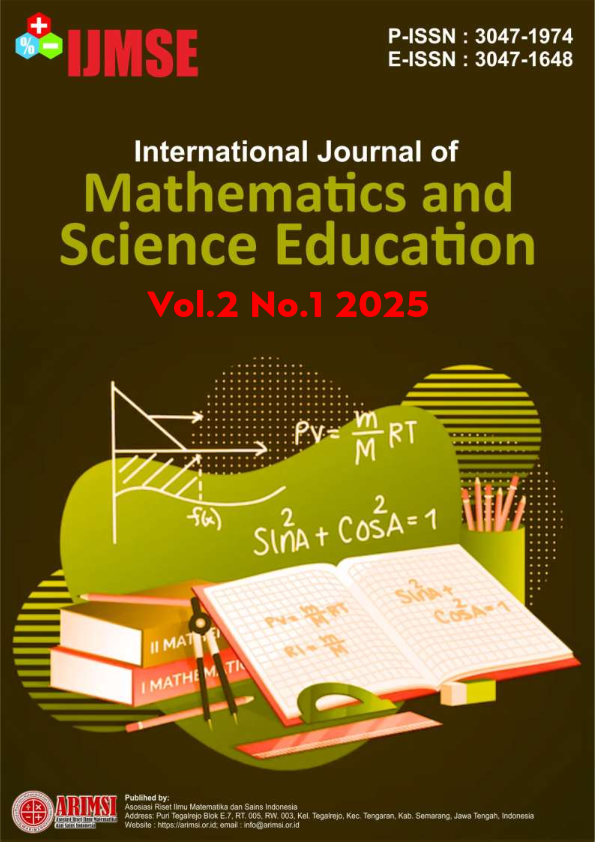The Implementation of the Cooperative Model Reviewed from Motivation Towards Learning Achievement of Class XII Students at Guppi High School
DOI:
https://doi.org/10.62951/ijmse.v1i4.174Keywords:
cooperative, model, learning, achievement, motivationAbstract
This type of research is an experimental research involving two experimental groups. The sample in this study was class XII. 1 as experimental class 1 and class XII. 2 as experimental class 2. Data were collected using questionnaires, tests, and observation sheets. The data were then analyzed descriptively and two-way analysis of variance (ANOVA) and continued with a post hoc test. The results of the study showed that (1) the average mathematics learning achievement of students using the Talk Stick cooperative learning model was 88.7 out of an ideal value of 100 with a very high category, (2) the average mathematics learning achievement of students using the Example Non-Example cooperative learning model was 87.6 out of an ideal value of 100 with a very high category, (3) there was a significant difference in mathematics learning achievement between students with high, medium, and low learning motivation with a significance of 0.001, and (4) there was no interaction between the cooperative learning model and motivation on mathematics learning achievement with a significance of 0.306.References
Amir, Z., & Risnawati. (2016). Psikologi pembelajaran matematika. Aswaja Pressindo.
Hurme, T.-R. (2005). Students’ activity in computer-supported collaborative problem solving in mathematics. International Journal of Computers for Mathematical Learning, 10, 49–73. https://doi.org/10.1007/s10758-005-4417-3
Manullang, S. (2017). Buku guru. Kementerian Pendidikan dan Kebudayaan.
Rasyid, H., & Mansur. (2009). Penilaian hasil belajar. Wacana Prima.
Ruslan. (2009). Buletin Pa’birita, No. 10, Tahun VI, September.
Rusman. (2010). Model-model pembelajaran mengembangkan profesionalisme guru. PT Raja Grafindo.
Santrock, J. W. (2009). Psikologi pendidikan. Salemba Humanika.
Sardiman, A. M. (2012). Interaksi dan motivasi belajar mengajar. Rajawali Pers.
Sari, N., et al. (2018). Analisis motivasi belajar siswa dalam pembelajaran fisika sekolah menengah atas. Jurnal Pendidikan dan Kebudayaan, 3(1).
Šarūnė, M., Kepalaitė, A., & Legkauskas, V. (2014). Relationship between social competence, learning motivation, and school anxiety in primary school. Procedia - Social and Behavioral Sciences, 116, 2936–2940. https://doi.org/10.1016/j.sbspro.2014.01.703
Sugihartono. (2007). Psikologi pendidikan. UNYPress.
Sugiyono. (2014). Metode penelitian pendidikan. Alfabeta.
Sumantri, & Syarif. (2015). Strategi pembelajaran teori dan praktik di tingkat pendidikan dasar. Raja Grafindo Persada.
Sundayana, R. (2014). Statistika penelitian pendidikan. Alfabeta.
Suprijono, A. (2009). Cooperative learning. Pustaka Pelajar.
Susanto, A. (2013). Teori belajar dan pembelajaran di sekolah dasar. Kencana Prenada Group.
Syafaruddin. (2005). Manajemen pembelajaran. Quantum Teaching.
Syah, M. (2011). Psikologi pendidikan dengan pendekatan baru. PT Remaja Rosdakarya.
Thobroni. (2015). Belajar dan pembelajaran: Teori dan praktik. Ar Ruzz Media.
Tiro, A. (2008). Dasar-dasar statistika. Andira Publisher.
Trianto. (2010). Mendesain model pembelajaran inovatif-progresif. Kencana.
Widyoko, S. (2009). Evaluasi program pembelajaran. Pustaka Pelajar.
Wulandari, R., & Istiqomah. (2015). Efektivitas model pembelajaran talking stick disertai penemuan terbimbing terhadap hasil belajar matematika siswa kelas VIII SMP Negeri 11 Yogyakarta. Union: Jurnal Pendidikan Matematika, 3(1).
Downloads
Published
How to Cite
Issue
Section
License
Copyright (c) 2024 International Journal of Mathematics and Science Education

This work is licensed under a Creative Commons Attribution-ShareAlike 4.0 International License.





